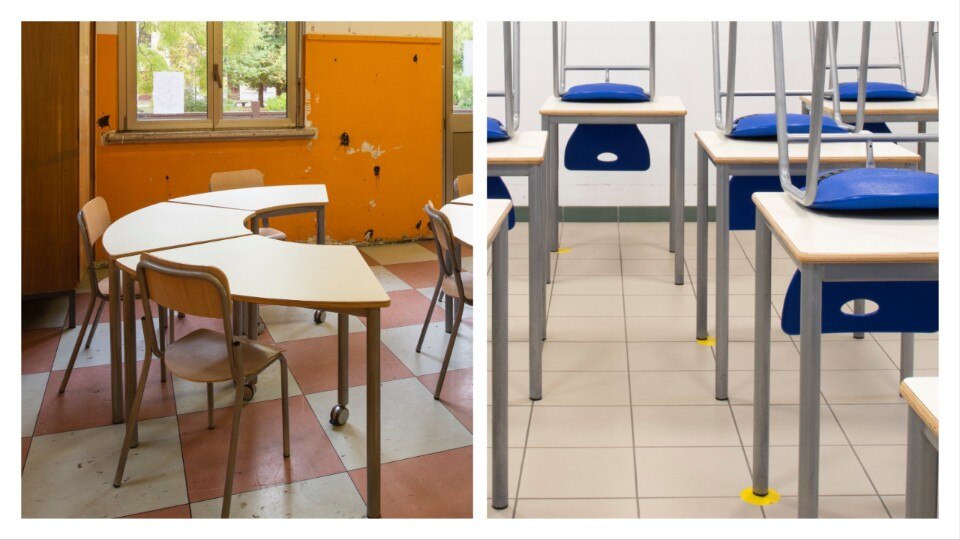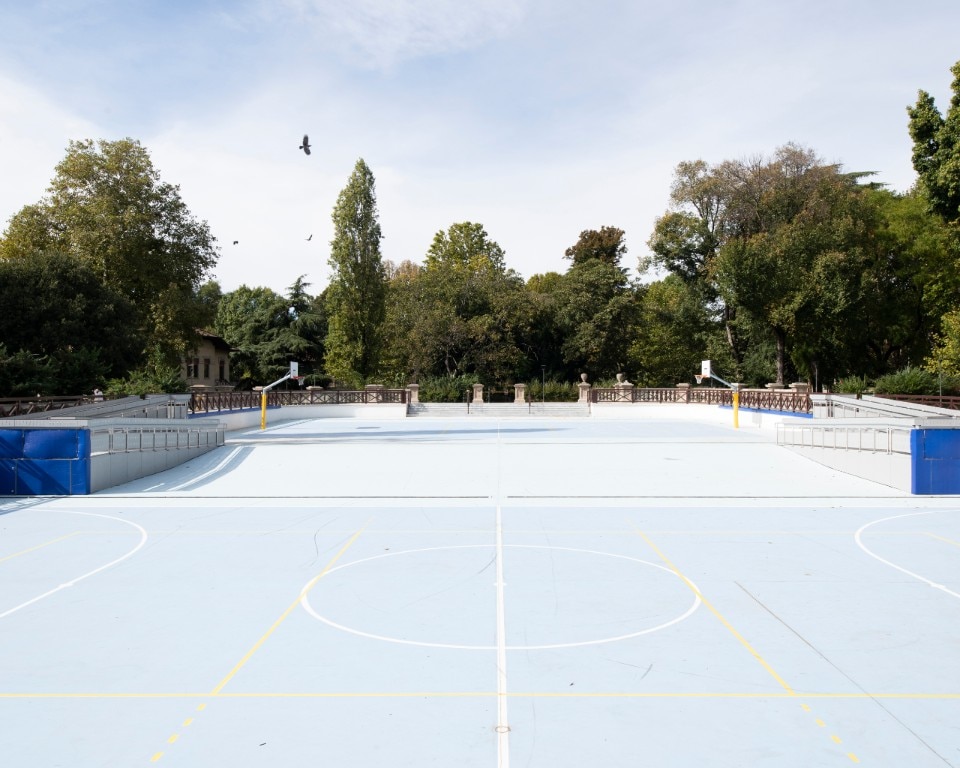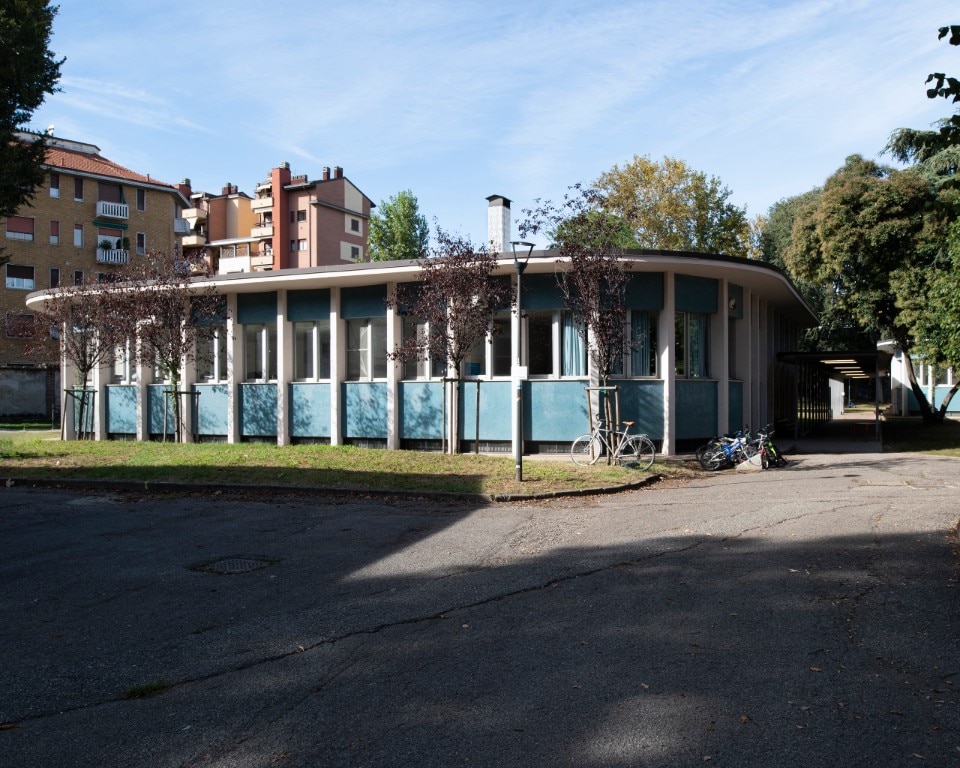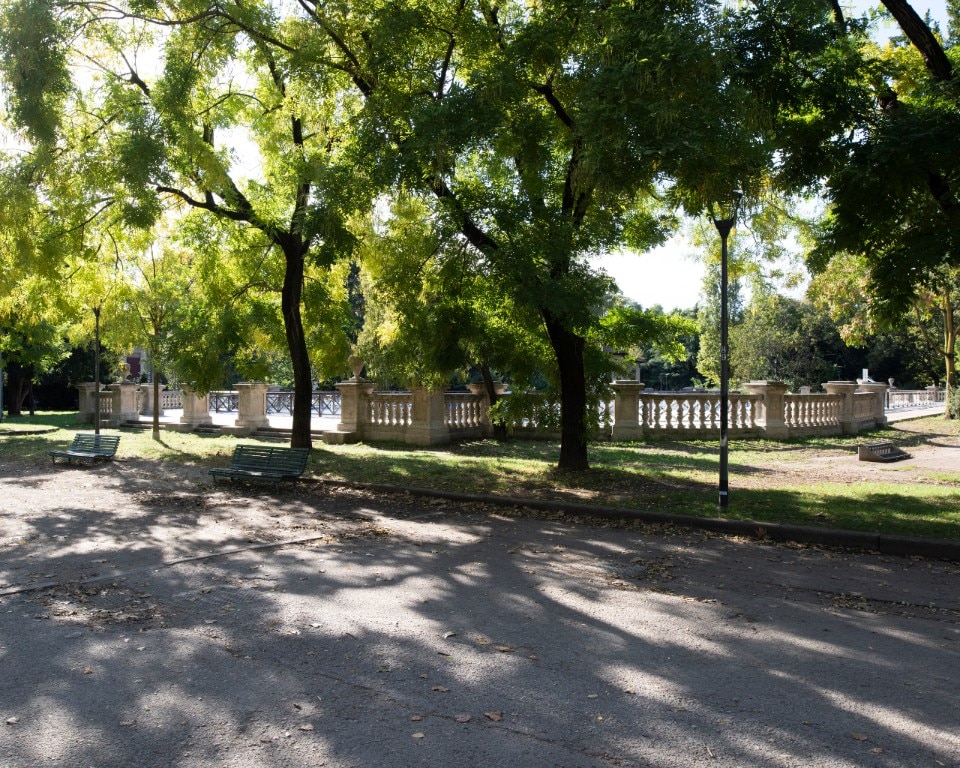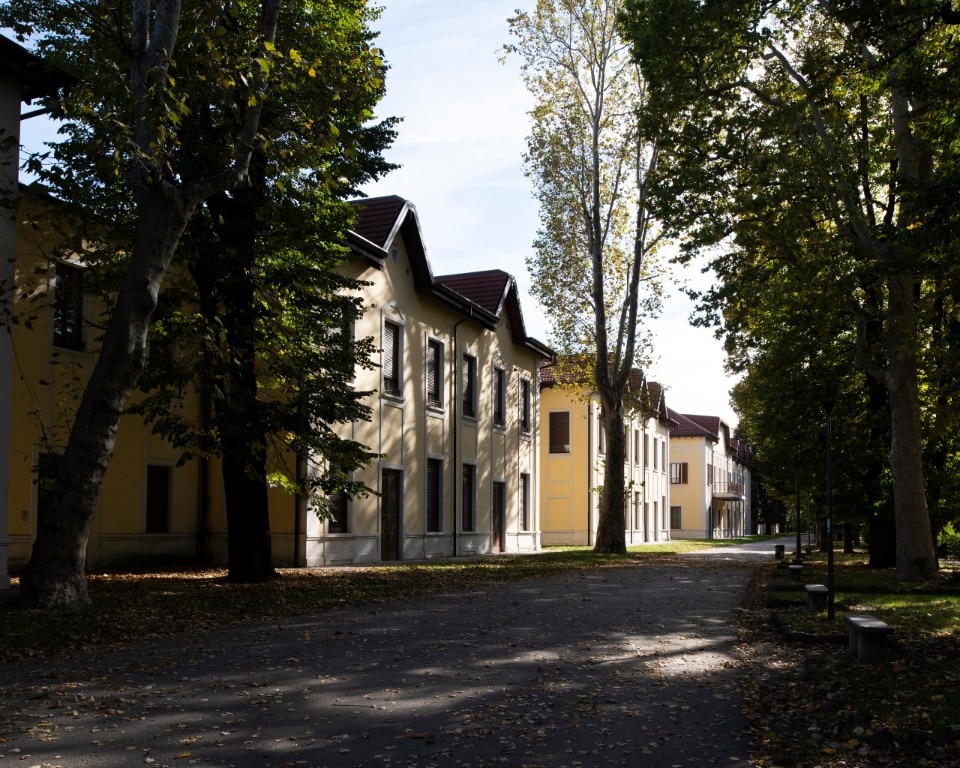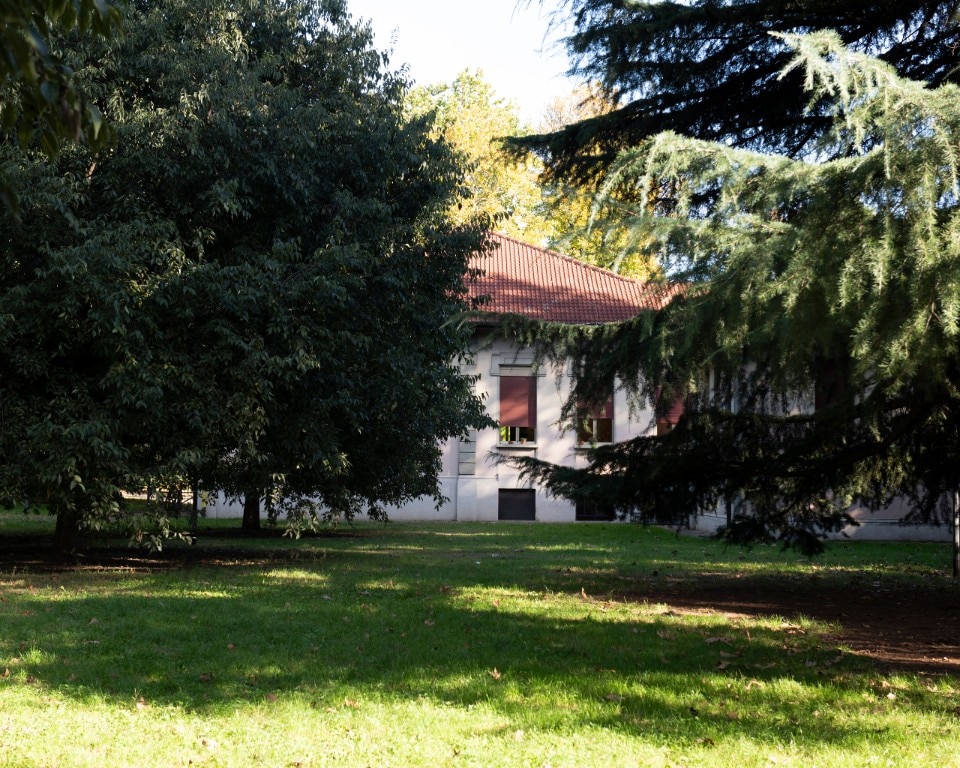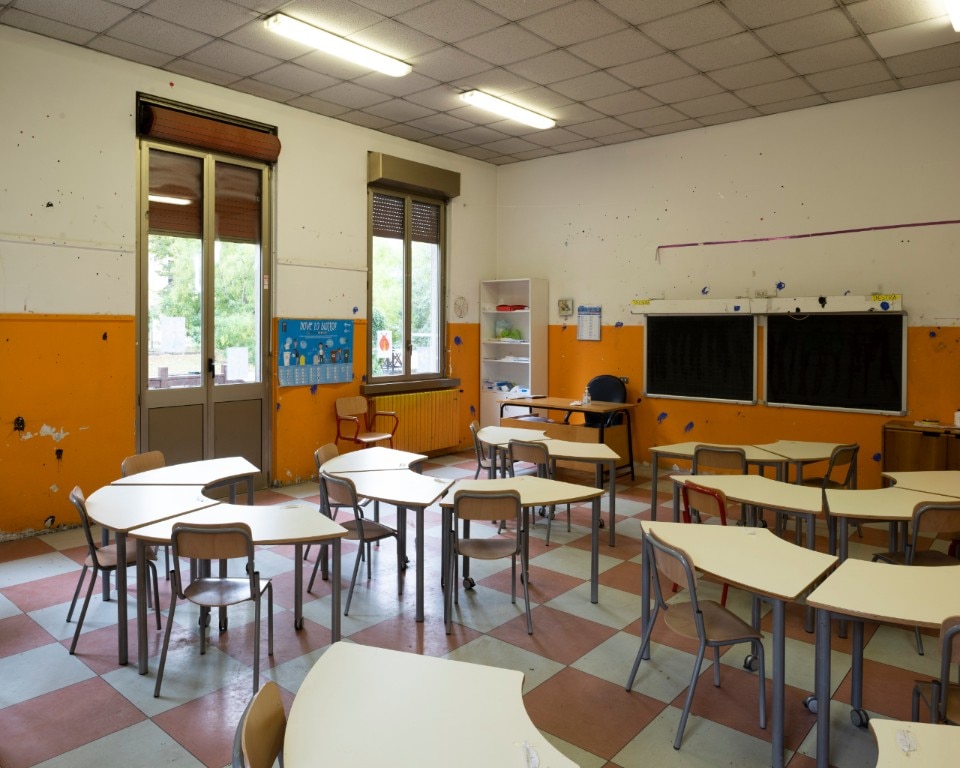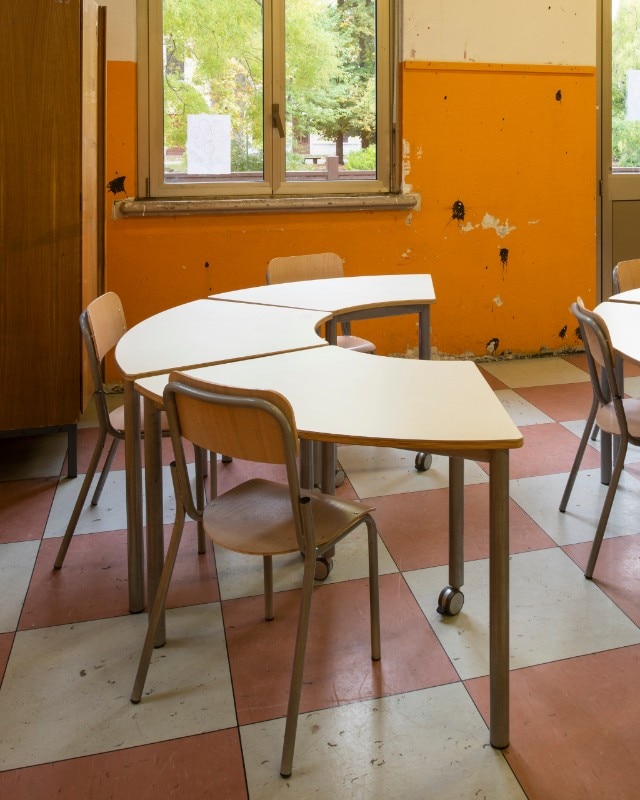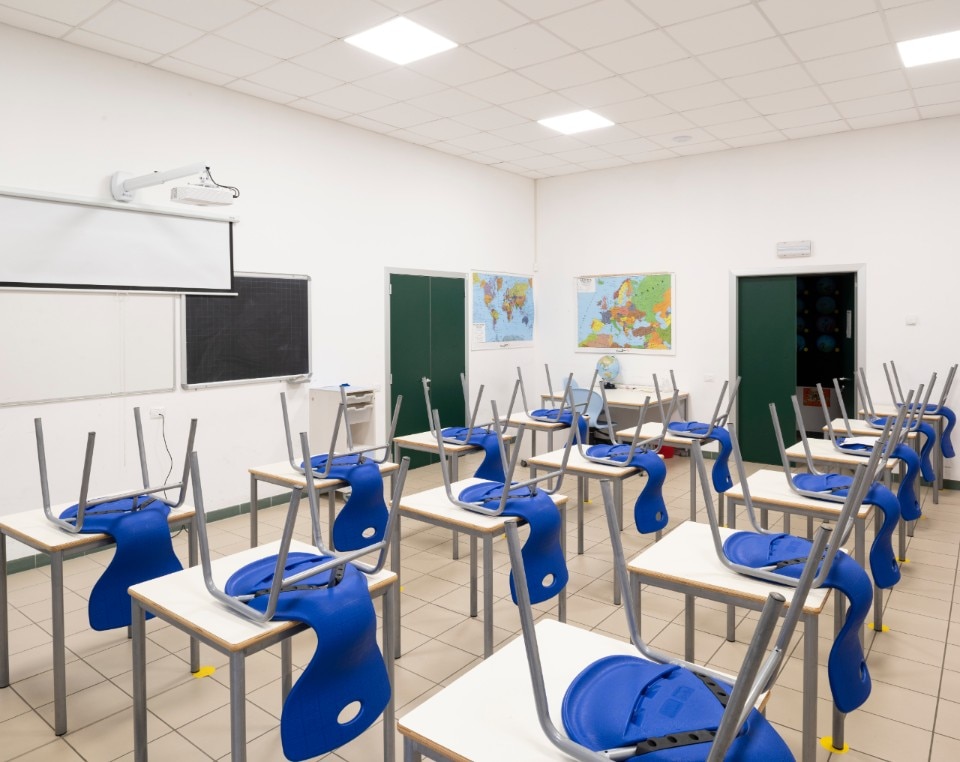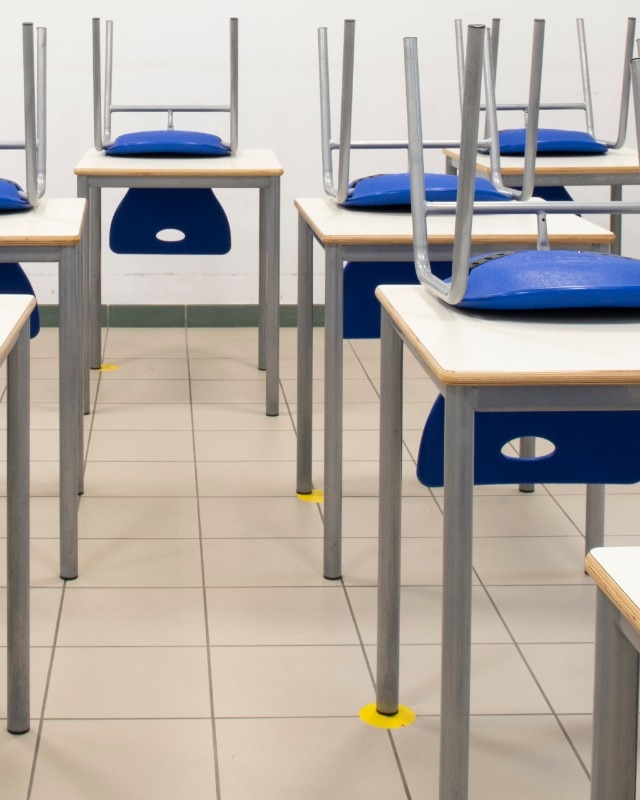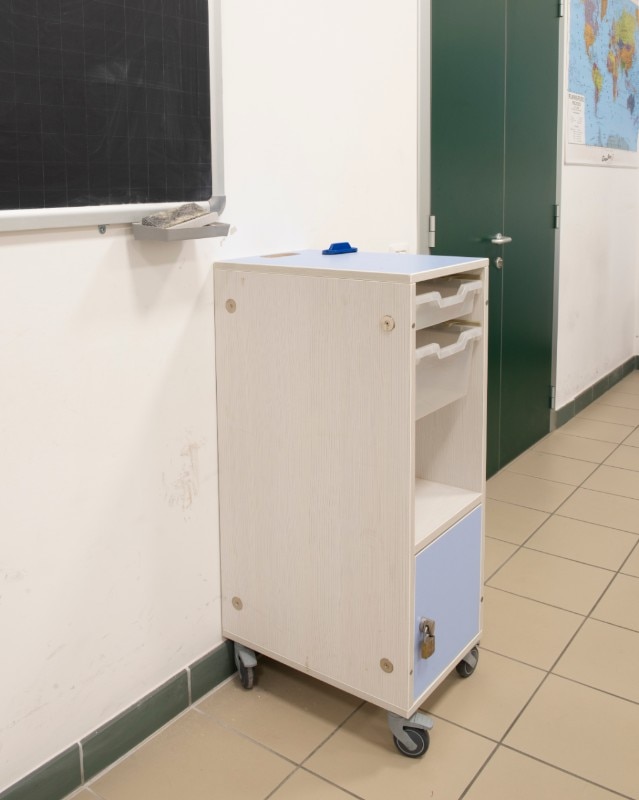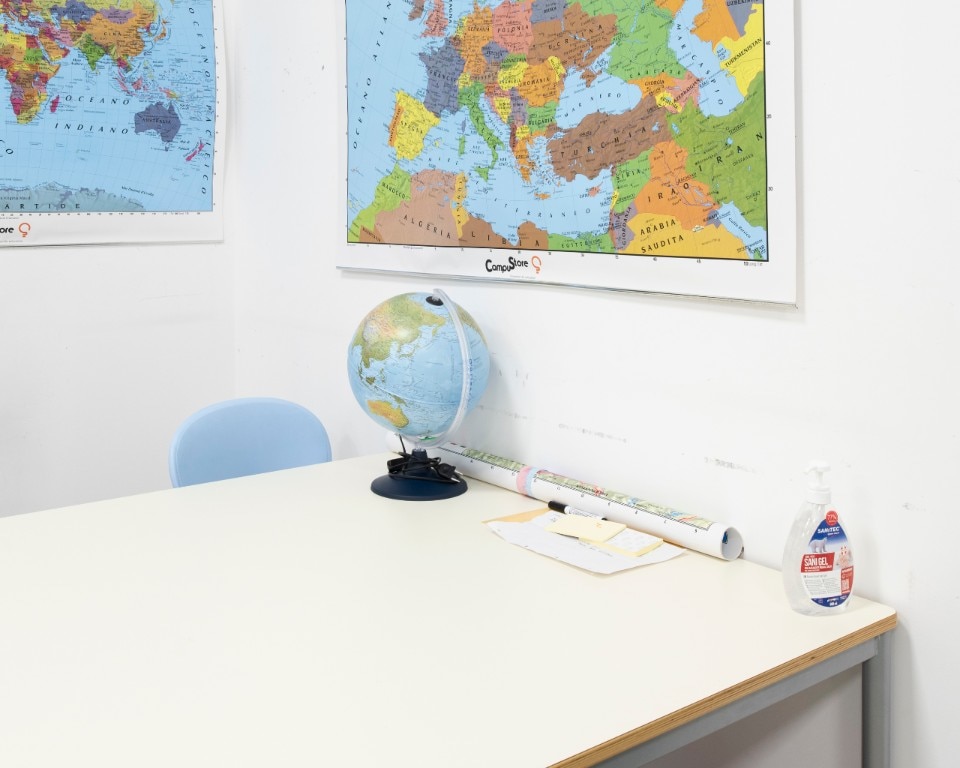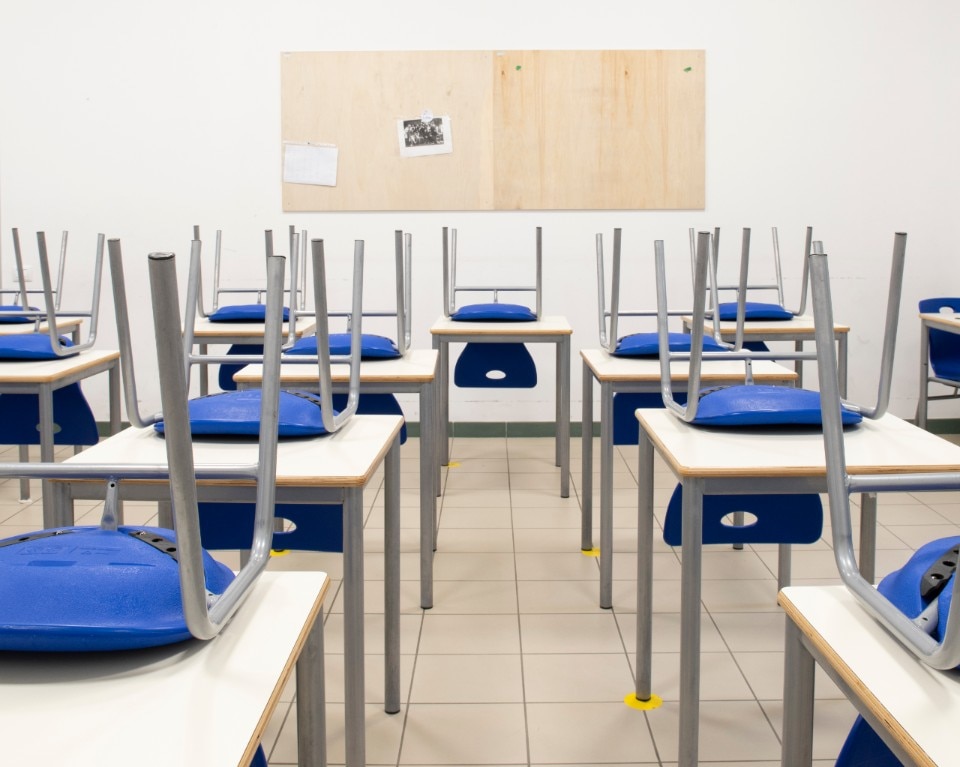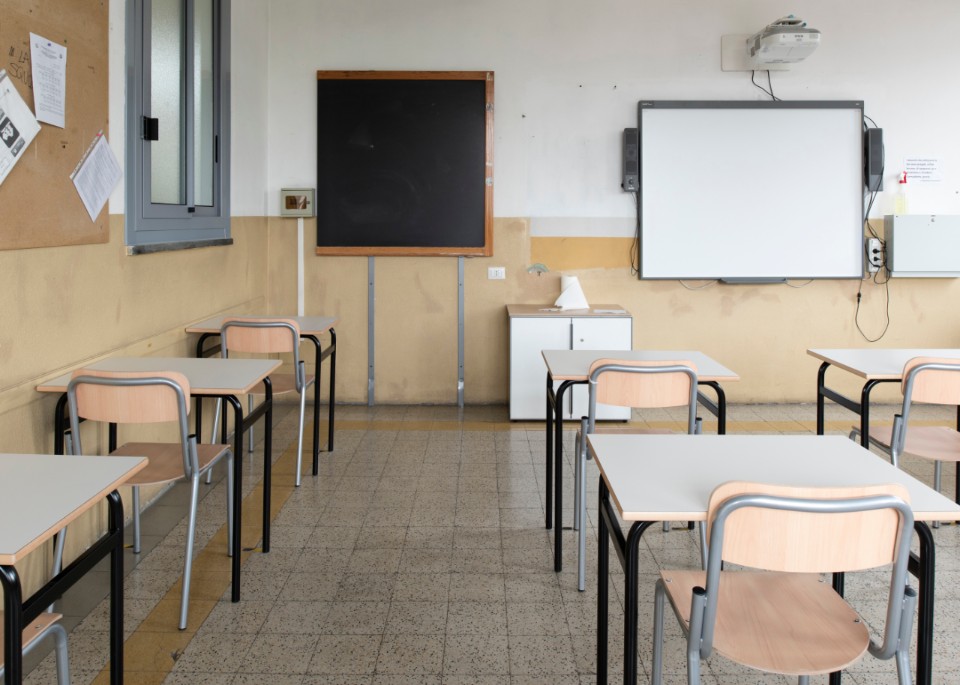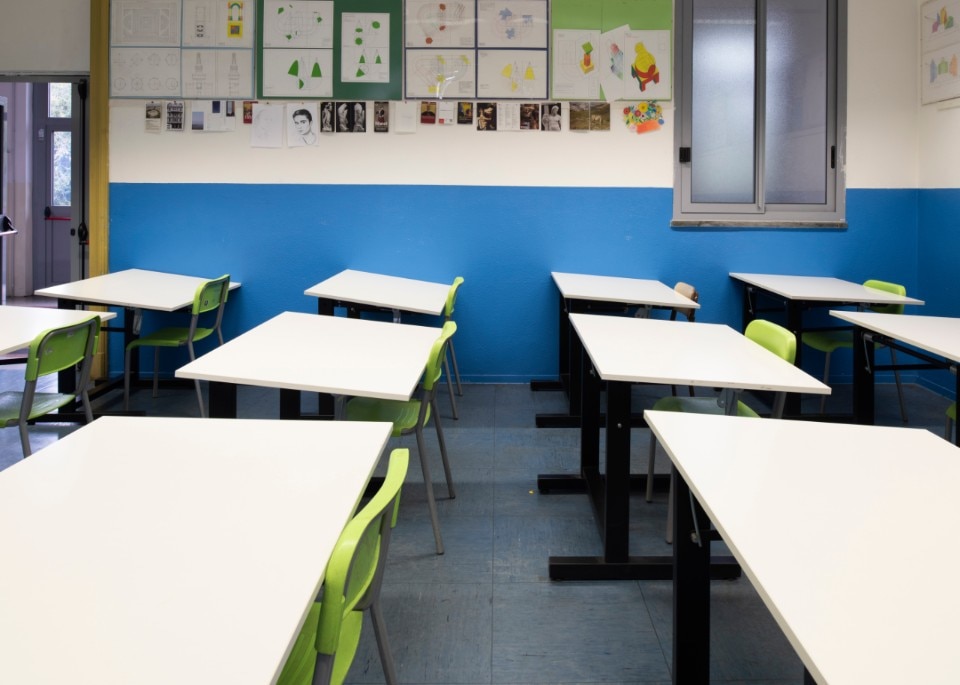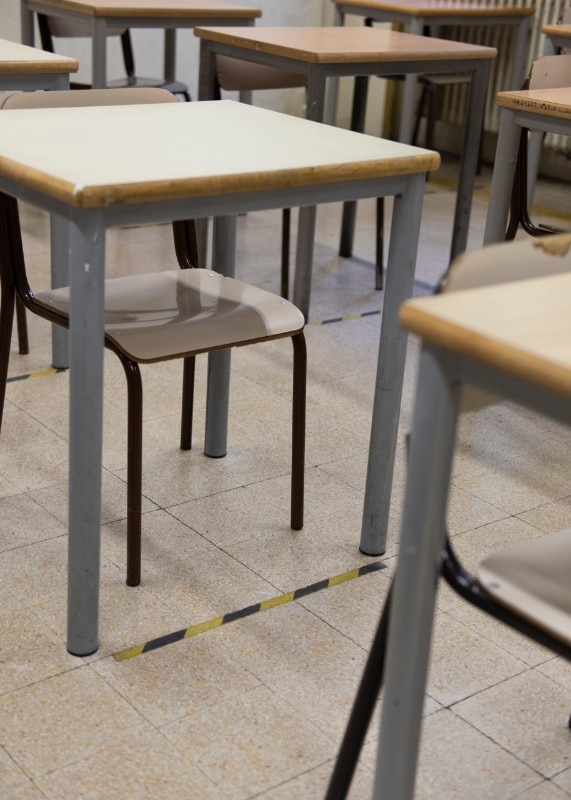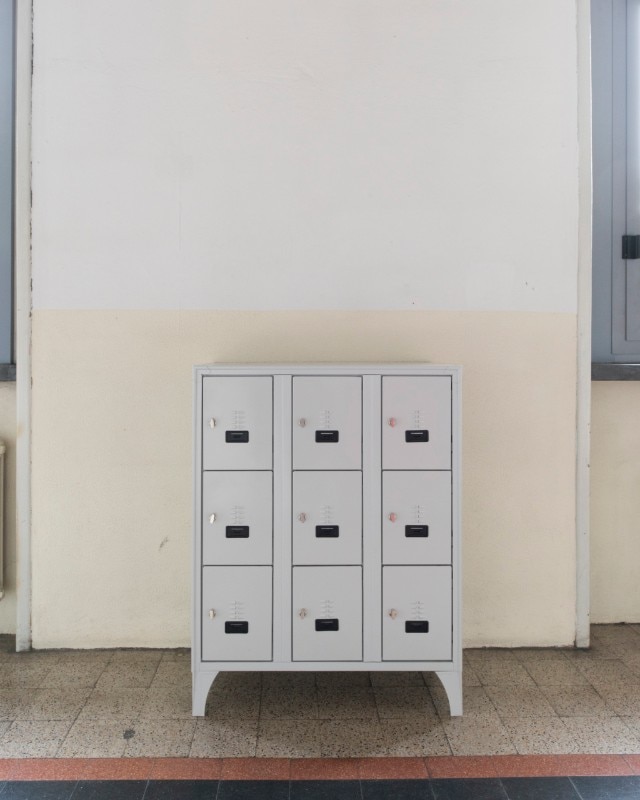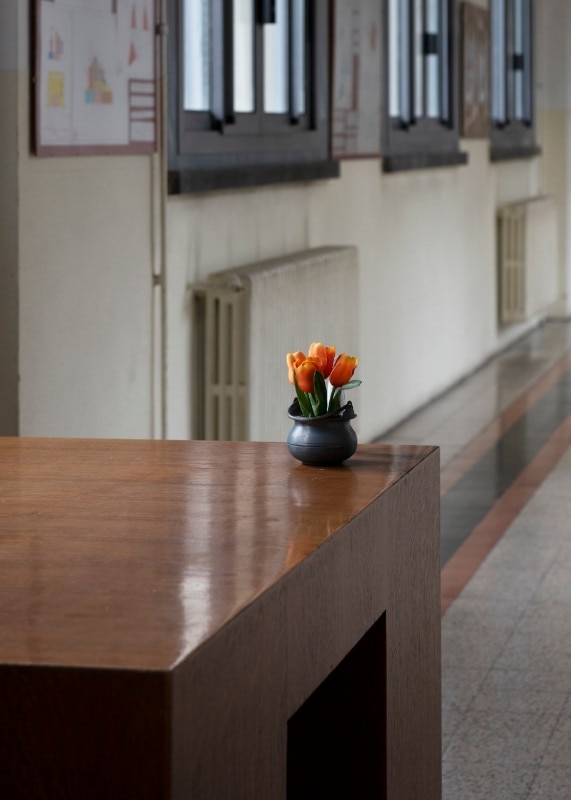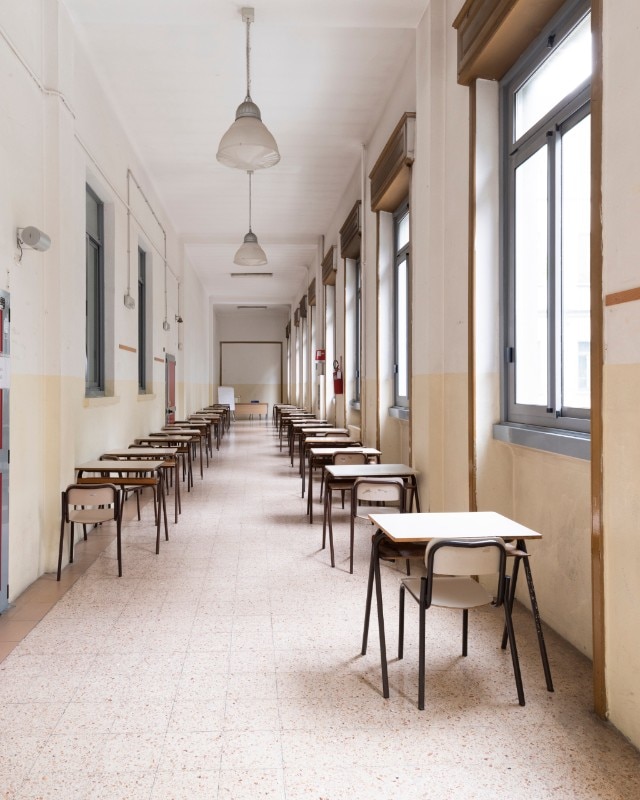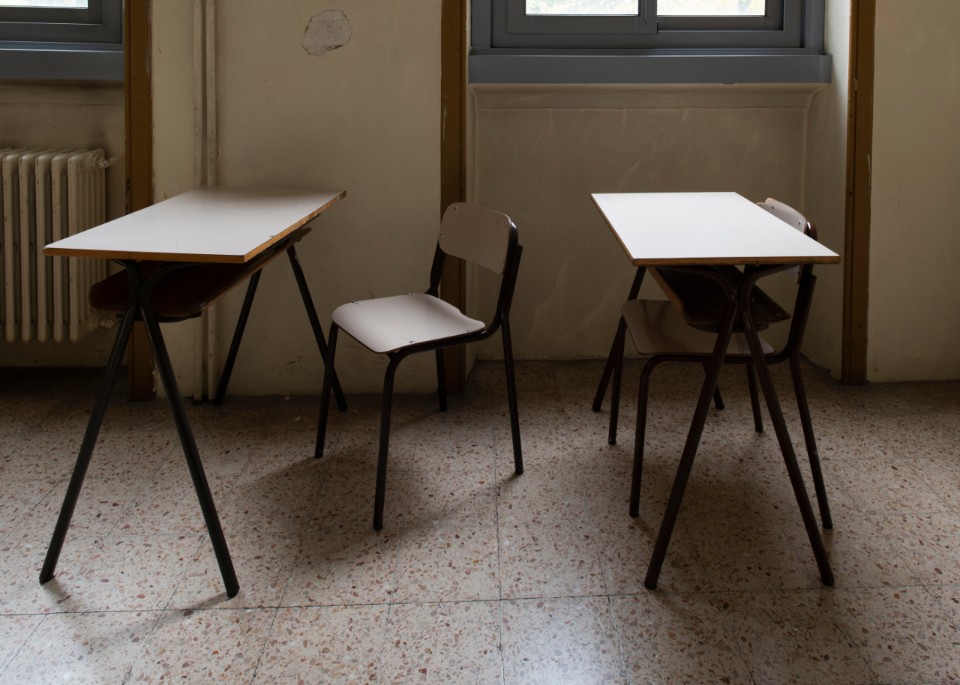“This place was born for students’ health” Francesco Muraro said, principal of Trotter. At the beginning of the last century, here was the racecourse. Then, in 1924, the Milan mayor, Emilio Caldara, bought this 120,000 square metre area and thus took shape a very special school, the Casa del Sole, designed for sick children, in which they would find healthy spaces in the open air, a swimming pool and lawns where they could relax. This is the story that Muraro told Domus while we were walking through the park: "This is my way of running this school: walking", he commented. Today there are almost 1350 students here, 280 of whom are middle school students and almost 580 primary school ones, of whom Muraro is principal. Still today this is a unique school, a meeting point between the advance of the Nolo gentrification and Via Padova, the multi-ethnic area par excellence of Milan. In the afternoon and at weekends, the park is open to everyone. For the rest of the time, it is a school.

In the long-abandoned spaces occupied by the swimming pool, a double multifunctional sport field has been inaugurated, standing out among the autumn park colours with its blue colour. When we arrived, there was a primary school class that was teaching in the lawn. Soon another one would arrive. "The more outdoors the better" Muraro said, who has had 90 Decathlon camping sets purchased, for a total of 360 seats, so that the students could attend classesanywhere in the park. It was early October and the schools had just reopened. The second lockdown, which in a monthwould hit all Milan, was a ghost incredibly far away at that moment, indeed was still there a subtle optimism in the air that we Italians have been dragging along since the holidays, during which Covid-19 loosened its grip. The principal Muraro spent his summer mainly as "the architect, or rather the surveyor", as he said, who always carried the school map with him in his backpack. Because behind the schools reopening after the summer there was above all a great deal of work by the school administrators, who worked through the regulations with hours of study, long telephone calls and a constant discussion with colleagues about the principals' WhatsApp groups.

In the recently renovated former boarding school, where puny children used to be housed, there is a place for middle school classes. The ribbon on the floor indicates where the desks have to be placed, which are spaced apart making possible there is at least one metre between one student and another. The furnishings are all brand new, with experimental solutions such as mobile cupboards and a wheeled library that moves around in the common spaces, all of which are stationary due to the new rules. Just as the laboratory classrooms have remained closed and unused. "All this is obviously done to reduce the risk, it's impossible for the virus not to circulate", Muraro explained, again outdoors, while we were moving towards a pavilion where there were some elementary classes. In the meantime, he detailed the leopard spot quarantine procedures that come into effect if a student is infected.
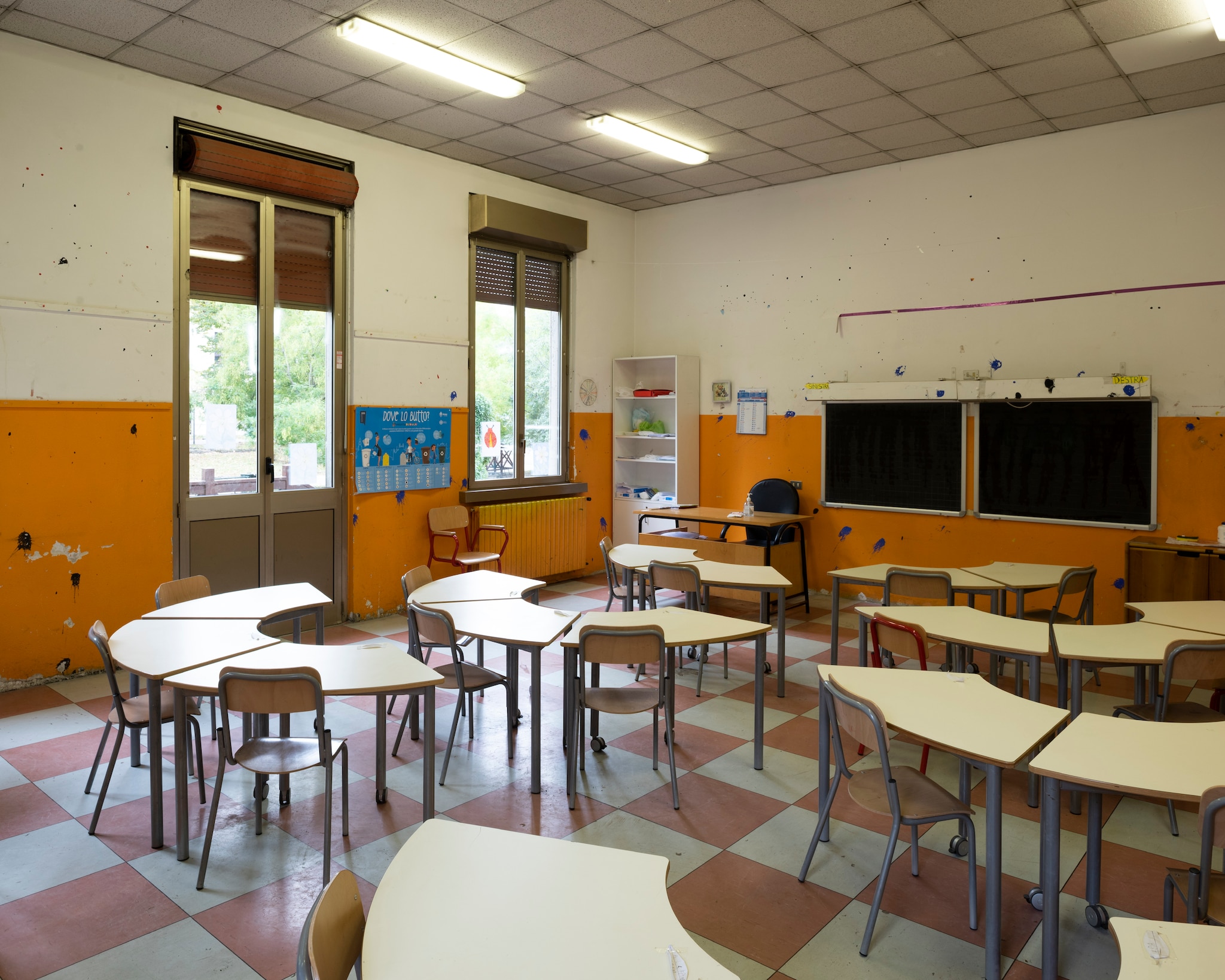
In the classroom the children were all spaced out, all wearing masks. At the entrance there was a bottle of hand sanitizer. We glided between various primary school classrooms that suffered the ravages of time than those of the middle school, with colourful and humble interiors that seemed to merge with the immediately outside nature. There the benches were different; they had the wedge ring shape. They were designed to be arranged in a circle and to favour non-frontal teaching. But the only feasible solution, in order to comply with the new regulations on distances, was to place them in hemicycles, spaced slightly apart from each other.
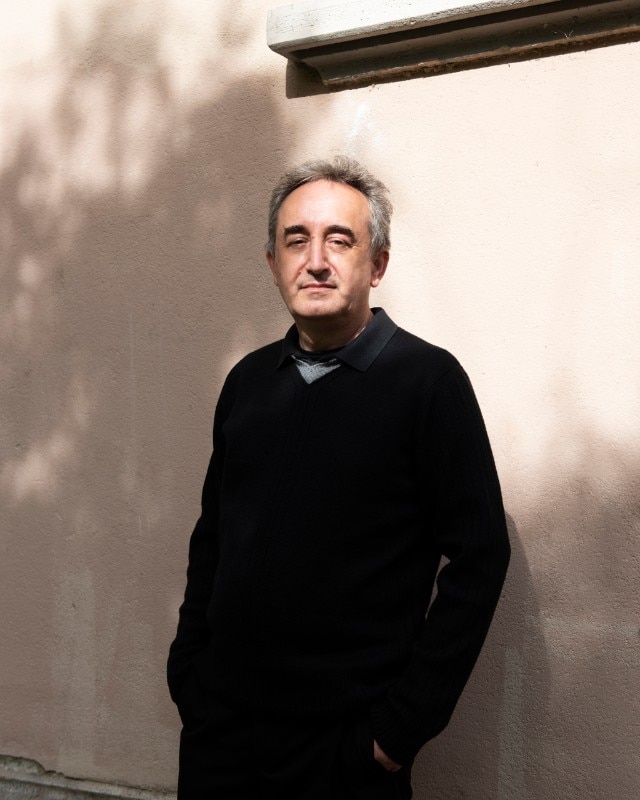
From an outside perspective, we tend to think of school as sclerotized, vaguely out of time, conservative, perennially equal to itself. But due to Covid-19 it has adapted with a great survival instinct. That of a versatile modularity is also the first commandment in the new school spaces design according to Silvia Minutolo and Marco Giai Via’s Archisbang Associati, the studio that recently designed the renovation of Giovanni Pascoli middle school in Turin, a nineteenth-century building whose spaces have been completely rethought, by overcoming the preconception that teaching activities should only take place in classrooms. "In the innovative school guidelines, one imagines teaching everywhere," Archisbang explained. A pre-Covid-19 paradigm shift that today adds the advantage of a better distance management. The numbers explain it well: if in an average sized classroom each student has a minimum of 1.8 square metres at his or her disposal, in order to be "socially spaced" the surface area of this sort of personal perimeter must be raised to more than three and a half square metres each. And so, a classroom should be twice as big, or half the class size. Using the other spaces of the school building, corridors first, as was done at Pascoli, with the introduction of inhabited corridors, equipped with tables and seats, this problem does not arise. The innovative school is a health emergency-proof school.
Pity that the Pascoli is a resounding exception. In Italy most of the school buildings were built before 1975 and the new and innovative ones can be counted on the fingers. However, it is surprising how some of the concepts that can be seen in these new schools were adopted by the principals to deal with the emergency caused by the pandemic, adapting them to the available spaces. I arranged an appointment with Giovanna Mezzatesta, principal of the scientific high school named after the Milanese architect Piero Bottoni, at the end of October, when teaching was still in attendance. Bottoni's is a large old school building in Via MacMahon, near the Ghisolfa bridge. It reminds countless others: the wide corridors, the classrooms precise size, the flight of stairs that every day brings the 800 students to the classroom, the floors with old style decorations that today could fit in the house of the most refined and a little hipster influencer. It was afternoon, the school was empty, you could hear the echo of our footsteps. "To begin with, we moved the larger classrooms into larger spaces," the principal explained. For example, in the classroom named after Professor Meda, a beloved teacher who died suddenly a couple of years ago. The drawing workshop dedicated to him had walls painted blue, because "blue is a warm colour" was one of his favourite quotes. Today the classroom houses an entire class.
As in the innovative school reimagined by Archisbang, here at Bottoni the concept of class, if not outdated, has been redefined, reimagined and made fluid. In order to avoid distance teaching, "split" sections, ACE and BDF, have been created, entrusted to the volunteers’ teaching, which collect 5 students in turn from each of the former. A brilliant solution, based on logic, which in any case must be governed in teaching. The case of the student who did not do his homework under the excuse of being in a split class, the principal said, was there.
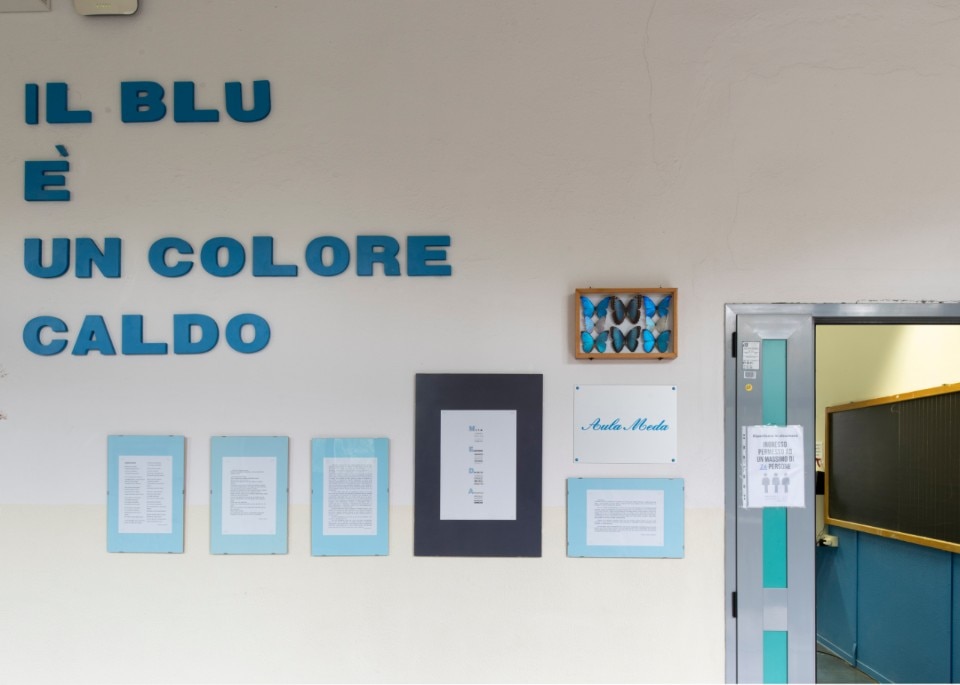
Giovanna Mezzatesta recalled the fatalism and then the growing fear with which the students welcomed the pandemic and all that followed this spring. And as after the summer they perhaps came back a little too brave. The principal pointed out several times that the disease is not in the school, the disease is outside. The Covid-19 cases that emerged at Bottoni came mainly from boys who play team sports and contact sports. Every morning, all students were checked for fever before they entered in the school.
During our tour, she showed us the blind branch of a corridor that had been set up as a classroom, and a classroom with small desks, paid 35 euros each, "a simple and cheap solution to encourage distance", and in a basement the sadly famous - and very expensive - mobile chairs introduced by the Ministry of Education to deal with the virus. Obviously, all this huge effort to re-imagine teaching in a safer and a more spaced context has not helped much, since the Prime Ministerial Decree banned the school in attendance for high schools at the beginning of November. "We have worked for the reopening and we are undergoing closure", is the lapidary comment that Giovanna Mezzatesta sended me via WhatsApp.
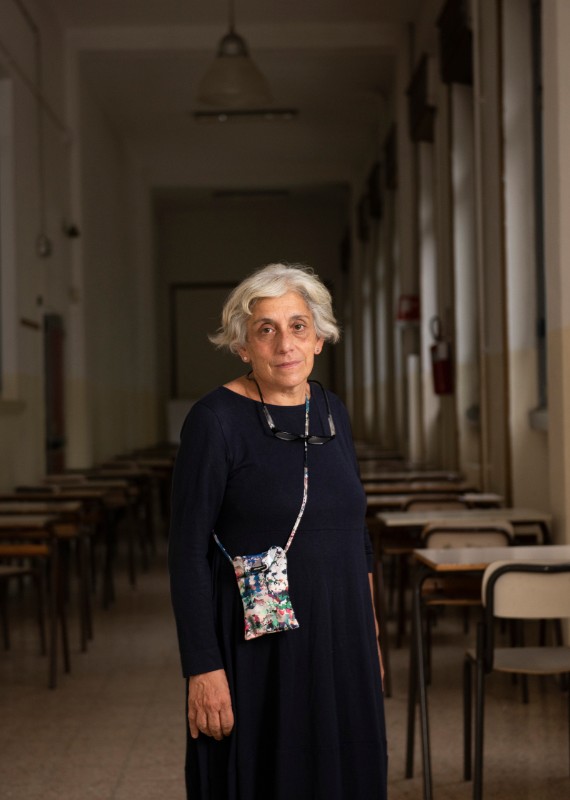
It is quick to say distance learning. In reality it is far from simple. From a teaching point of view, because teachers have to reinvent ways, timescales and approaches. From a psychological point of view, students find themselves extracted from the classroom social network and they have to re-modulate their presence in front of a screen instead of in the classroom. And there is a problem of infrastructure: it is not necessarily the case that all teachers have the possibility to teach from home, but it is not even taken for granted that old Italian schools are always connected to a fast network; or that there are classrooms set up for distance learning. A problem that spreads to students: the school via smartphone or laptop costs several connection gigs and not everyone can afford them. But at the moment, a mixed teaching, or a remote teaching, seem to be the only viable ways: there is the need for school to be resilient and adaptable. It has already done so; it will have to do it even better.
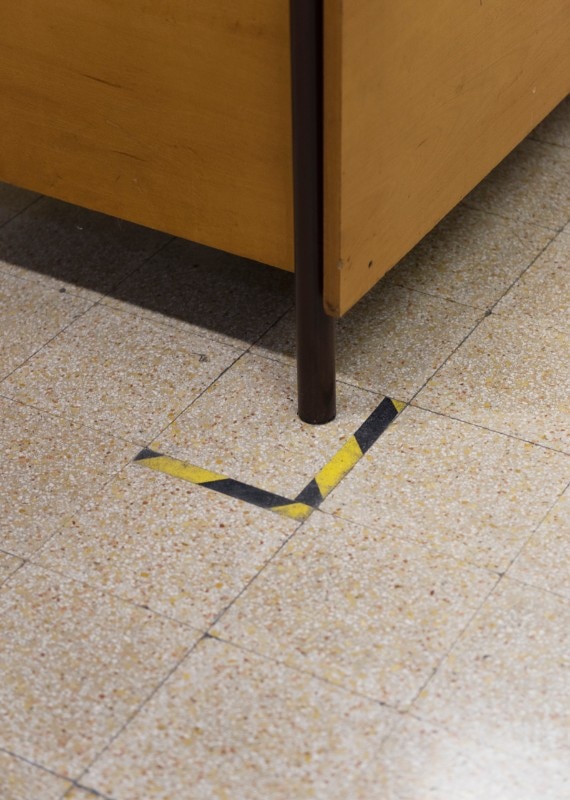
In the meantime, however, the idea of a different school can be glimpsed on the horizon. The pandemic may have laid the foundations for something new. "Today everyone has been forced to live this innovative school," Archisbangcommented. But we must also hope, he concluded, "that it also arrives to the policies with the right temporal vision and not with the usual exhausting urgency management, the same one that has led us to collect millions of pieces of Plexiglas that we will soon have to throw away, producing enormous ecological damage".


